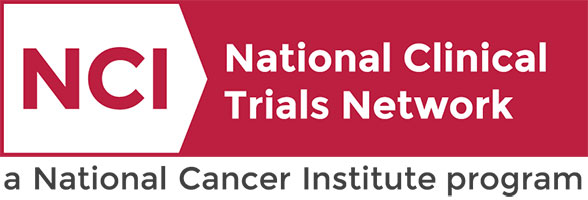Clinical Trials Search at Vanderbilt-Ingram Cancer Center
Clinical Trial of YH32367 in Patients With HER2 Positive Locally Advanced or Metastatic Solid Tumor
Miscellaneous
Miscellaneous
This first-in-human study will be counducted to evaluate the safety, tolerability, pharmacokinetics (PK) and anti-tumor activity of YH32367 in Patients with HER2-Positive Locally Advanced or Metastatic Solid Tumors.
Miscellaneous
I/II
Heumann, Thatcher
NCT05523947
VICC-DTMDT24023
Neoadjuvant Darolutamide Alone or in Combination With Standard Therapy for Stage II-IIIA, AR+, TNBC
Breast
Breast
This phase II trial compares the effect of adding darolutamide to standard therapy versus standard therapy alone before surgery for the treatment of patients with stage II-IIIA androgen receptor positive triple-negative breast carcinoma. Standard therapy before surgery for triple-negative breast cancer typically consists of a combination of chemotherapy and immunotherapy drugs. Chemotherapy drugs, such as carboplatin, paclitaxel, doxorubicin and cyclophosphamide, work in different ways to stop the growth of tumor cells, either by killing the cells, by stopping them from dividing, or by stopping them from spreading. Immunotherapy with monoclonal antibodies, such as pembrolizumab, may help the body's immune system attack the cancer, and may interfere with the ability of tumor cells to grow and spread. Darolutamide is in a class of medications called androgen receptor inhibitors. It works by blocking the effects of androgen (a male reproductive hormone) to stop the growth and spread of tumor cells. Giving darolutamide in combination with standard therapy before surgery may make the tumor smaller and may reduce the amount of normal tissue that needs to be removed.
Breast
II
Abramson, Vandana
NCT07016399
VICC-VCBRE23490
TReatment of ADC-Refractory Breast CancEr With Dato-DXd or T-DXd: TRADE DXd
Breast
Breast
The purpose of this study is to test the safety and effectiveness of the sequence of two investigational drugs (trastuzumab deruxtecan followed by datopotamab deruxtecan, or datopotamab deruxtecan followed by trastuzumab deruxtecan) to learn whether the treatment works in treating HER2-negative (HER2-low or HER2-0) metastatic breast cancer.
The names of the study drugs involved in this study are:
* Datopotamab deruxtecan (a type of antibody drug conjugate)
* Trastuzumab deruxtecan (a type of antibody drug conjugate)
The names of the study drugs involved in this study are:
* Datopotamab deruxtecan (a type of antibody drug conjugate)
* Trastuzumab deruxtecan (a type of antibody drug conjugate)
Breast
II
Abramson, Vandana
NCT06533826
VICC-ITBRE23546
ETHAN - ET for Male BC
Breast
Breast
This research study is looking to see how well male breast cancer responds to preoperative treatment with endocrine therapy and which endocrine therapy regimen is the most effective treatment for male breast cancer.
The drugs used in this study are:
* Tamoxifen
* Anastrozole
* Degarelix
* Abemaciclib
The drugs used in this study are:
* Tamoxifen
* Anastrozole
* Degarelix
* Abemaciclib
Breast
II
Sharpe, Jessica
NCT05501704
VICCBRE25028
Avelumab or Hydroxychloroquine with or Without Palbociclib to Eliminate Dormant Breast Cancer
Breast
Breast
This clinical trial will assess the safety and early efficacy of Hydroxychloroquine or Avelumab, with or without Palbociclib, in early-stage ER+ breast cancer patients who are found to harbor disseminated tumor cells (DTCs) in the bone marrow after definitive surgery and standard adjuvant therapy.
Breast
II
Reid, Sonya
NCT04841148
VICCBRE2161
Safety and Efficacy of ALLO-501A Anti-CD19 Allogeneic CAR T Cells in Adults with Relapsed/Refractory Large B Cell Lymphoma, Chronic Lymphocytic Leukemia and Small Lymphocytic Lymphoma (ALPHA2)
This is a single-arm, open label, multicenter Phase 1/2 study evaluating ALLO-501A in adult subjects with R/R LBCL and CLL/SLL. The purpose of the ALPHA2 study is to assess the safety, efficacy, and cell kinetics of ALLO-501A in adults with relapsed or refractory large B-cell lymphoma and assess the safety of ALLO-501A in adults with relapsed or refractory chronic lymphocytic leukemia/small lymphocytic lymphoma (CLL/SLL) after a lymphodepletion regimen comprising fludarabine, cyclophosphamide, and ALLO-647.
Not Available
II
Jallouk, Andrew
NCT04416984
VICC-DTCTT24008
NMTT-Neuroblastoma Maintenance Therapy Trial Using Difluoromethylornithine (DFMO)
Multiple Cancer Types
Endocrine,
Neuroblastoma (Pediatrics),
Neuroendocrine,
Pediatrics
II
Pastakia, Devang
NCT02679144
VICCPED16157
Standard Systemic Therapy With or Without Definitive Treatment in Treating Participants With Metastatic Prostate Cancer
Prostate
Prostate
This phase III trial studies how well standard systemic therapy with or without definitive treatment (prostate removal surgery or radiation therapy) works in treating participants with prostate cancer that has spread to other places in the body. Addition of prostate removal surgery or radiation therapy to standard systemic therapy for prostate cancer may lower the chance of the cancer growing or spreading.
Prostate
III
Schaffer, Kerry
NCT03678025
SWOGUROS1802
A First-In-Human, Phase 1, Dose-Escalation Study of SGR-3515 In Participants with Advanced Solid Tumors
Not Available
I
Gibson, Mike
NCT06463340
VICC-DTPHI24100
Study of Navtemadlin add-on to Ruxolitinib in JAK Inhibitor-Nave Patients With Myelofibrosis Who Have a Suboptimal Response to Ruxolitinib
Hematologic
Hematologic
This clinical trial is evaluating whether addition of navtemadlin to ruxolitinib treatment will provide more clinical benefit than ruxolitinib alone for patients with Myelofibrosis who have a suboptimal response to ruxolitinib treatment alone.
Subjects will start by receiving ruxolitinib alone in the run-in period. Those who demostrate a suboptimal response from ruxolitinib alone will then be randomized 2:1 to receive navtemadlin or navtemadlin placebo as add-on treatment to their ongoing ruxolitinib. Randomized means that subjects will be assigned to a group by chance, like a flip of a coin. The study is blinded, meaning the subjects, doctors, central endpoint assessors and sponsor will not know which add on treatment (navtemadlin or navtemadlin placebo) the subject is receiving.
Subjects will start by receiving ruxolitinib alone in the run-in period. Those who demostrate a suboptimal response from ruxolitinib alone will then be randomized 2:1 to receive navtemadlin or navtemadlin placebo as add-on treatment to their ongoing ruxolitinib. Randomized means that subjects will be assigned to a group by chance, like a flip of a coin. The study is blinded, meaning the subjects, doctors, central endpoint assessors and sponsor will not know which add on treatment (navtemadlin or navtemadlin placebo) the subject is receiving.
Hematologic
III
Mohan, Sanjay
NCT06479135
VICC-DTHEM24136


